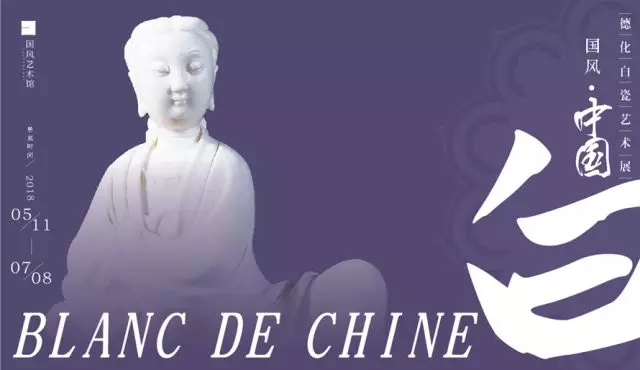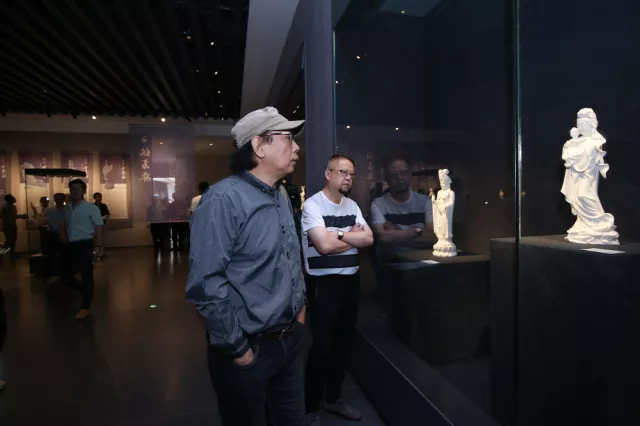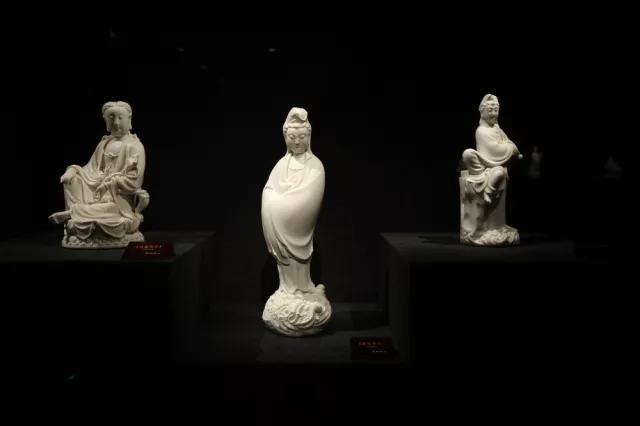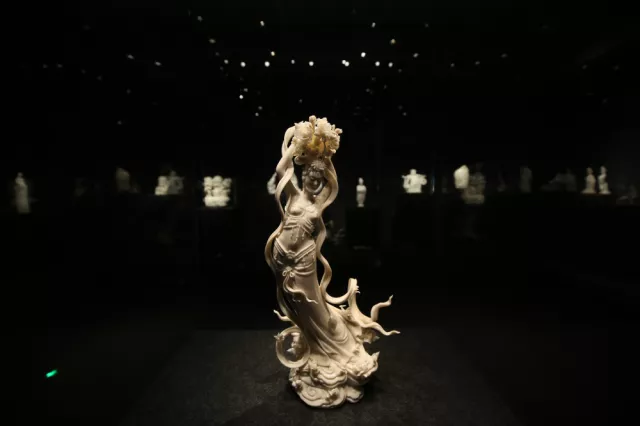Time
Until July 8
Tickets
Elegant Dehua porcelain on display| Until July 8
Venue
Metro
Line 5 to Wuhe Station (五和站), Exit A and then take a taxi
Until July 8
Elegant Dehua porcelain on display| Until July 8
Line 5 to Wuhe Station (五和站), Exit A and then take a taxi

Modern items of Dehua porcelain, a type of white Chinese porcelain originating from the Dehua region of Fujian Province, are on display at Guofeng Art Museum.
A traditional European term for Dehua porcelain is “Blanc de Chine.” It has been produced since the Ming Dynasty (1368-1644) to the present day. Large quantities were exported to Europe in the early 18th century when it was then duplicated in Meissen, Germany and elsewhere. It was also exported to Japan in large quantities.

The area along the Fujian coast was traditionally one of China’s main ceramic export hubs. Over 180 kiln sites have been identified extending in historical range dated from the Song Dynasty (960-1279) to modern day. The kilns found in Dehua also produced other ceramic wares, including some with under glaze blue decoration.
From the Ming period, porcelain objects were manufactured and achieved a fusion of glaze and body traditionally referred to as “ivory white” and “milk white.” The special characteristic of Dehua porcelain is the very small amount of iron oxide in it, allowing it to be fired in an oxidizing atmosphere to a warm white or pale ivory color. This color makes it instantly recognizable and quite different from the porcelain from the imperial kilns of Jingdezhen, which contains more iron and has to be fired in reduction if it is not to appear an unpleasant straw color.

The unfired porcelain body is not very plastic but vessel forms have been made from it. Donnelly lists the following types of product: figures, boxes, vases, jars, cups, bowls, fishes, lamps, cup-stands, censers, flowerpots, animals, brush holders, teapots, Buddhist and Taoist figures. A large output of figures, especially religious figures, was particularly revered in Fujian.
The numerous Dehua porcelain factories today make figures and tableware in modern styles.

德化白瓷,白如玉、明如镜、声如磐、薄如纸,是齐名景德镇青花瓷的中国名片,以其高淼的意境而名誉全球,更是被列入国家首批非物质文化遗产保护项目的宝物。
千年古县福建德化,位于泉州之西北。对外贸易发达、商业经济繁荣,文化融合与交流频繁,这些特定的历史背景,都为德化白瓷孕育了最为独特而丰厚的基础。
时至今日,全球的博物馆和私人藏家无不将德化白瓷列为精品珍藏,以至于到现在还被传颂“没有中国艺术品的博物馆绝称不上世界级的博物馆”,德化白瓷已经成为一种身份的象征。2015年,联合国世界手工艺理事会国际专家组更是全票通过,授予德化县“世界陶瓷之都”称号。
这次,国风艺术馆精心策划了一场关于德化白瓷的艺术大展,其中不仅有中国国家博物馆2017年度大展《丝路使者——中国白再出发》的精品回顾,更有逾一百六十六件白瓷的珍品展示。白瓷素来以宗教题材见长,特别是观音造像,自古以来都是中国佛教中最流行的信仰形态,所以除了以上的珍品之外,本次还将特别展现一百零一尊不同形态的观音造像,让观众感受到全方位的“中国白”文化。
Dates: Until July 8
Venue: Guofeng Art Museum, Galaxy World, intersection of Meiban Boulevard and Yabao Road, Longgang District (龙岗区梅坂大道与雅宝路交汇处星河World园区国风艺术馆)
Metro: Line 5 to Wuhe Station (五和站), Exit A and then take a taxi